Related Research Articles

The National Tramway Museum is a tram museum located at Crich,, Derbyshire, England. The museum contains over 60 trams built between 1873 and 1982 and is set within a recreated period village containing a working pub, cafe, old-style sweetshop and tram depots. The museum's collection of trams runs through the village-setting with visitors transported one-mile out into the local countryside and back. The museum is operated by the Tramway Museum Society, a registered charity.

The Blackpool Tramway runs from Blackpool to Fleetwood on the Fylde Coast in Lancashire, England. The line dates back to 1885 and is one of the oldest electric tramways in the world. It is operated by Blackpool Transport (BT) and runs for 11 miles (18 km). It carried 4.8 million passengers in the 2019/20 financial year.
Dick, Kerr and Company was a locomotive and tramcar manufacturer based in Kilmarnock, Scotland and Preston, England.
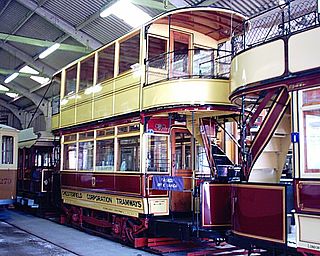
The Chesterfield and District Tramways Company and its successors ran a tramway system in the Derbyshire town of Chesterfield, England. The first horse-drawn line opened in 1882, and in 1897, the system was taken over by Chesterfield Corporation, who extended and electrified it in 1904 and 1905. Additional tramcars were purchased, but two had to be scrapped after a disastrous fire at the depot in 1916. The system suffered from a lack of maintenance as a result of reduced staffing levels during the First World War, and the trams were replaced by trolleybuses in 1927.

Ipswich Corporation Tramways was an electric tramway system that served the town of Ipswich in Suffolk from 23 November 1903 until 26 July 1926.

G. F. Milnes & Co. Ltd was a tramcar manufacturer based in Birkenhead (1886-1902) and Hadley, Shropshire (1900-1905)

The Darlington Corporation Light Railways operated a tramway service in Darlington between 1904 and 1926.

The Colne and Trawden Light Railway Company operated a tramway service in Colne and Trawden between 1903 and 1934.

Walsall Corporation Tramways operated a tramway service in Walsall between 1904 and 1930.
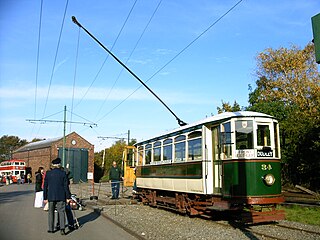
The Wolverhampton District Electric Tramways Company operated an electric tramway service between Dudley and Wolverhampton between 1899 and 1928.

The City of Carlisle Electric Tramways Company operated an electric tramway service in Carlisle between 1900 and 1931.
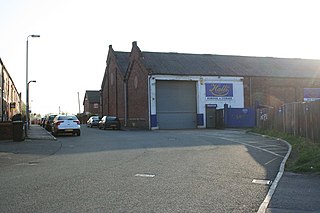
Wigan Corporation Tramways operated a tramway service in Wigan, England, between 1901 and 1931. The first tramway service in the town was run by the Wigan Tramways Company, whose horse trams began carrying passengers in 1880. They began replacing horses with steam tram locomotives from 1882, but the company failed in 1890 when a Receiver was appointed to manage it. The Wigan & District Tramways Company took over the system in 1893 and ran it until 1902. Meanwhile, Wigan Corporation were planning their own tramway system, obtaining an authorising Act of Parliament in 1893, and a second one in 1898. This enabled them to build electric tramways, and in 1902, they took over the lines of the Wigan & District Tramways Company.
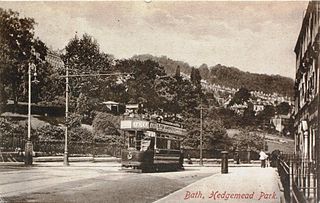
Bath Tramways Company and its successors operated a 4 ft horse drawn tramway service in Bath between 1880 and 1902. From 1903 until its closure in 1939 an expanded route carried electric trams operated by Bath Electric Tramways Company.

The Gateshead and District Tramways operated a tramway service in Gateshead between 1883 and 1951.
Rhondda Tramways Company operated a tramway service in Rhondda, Wales, between 1904 and 1934.
Llanelly and District Electric Tramways operated a standard gauge tramway service in Llanelli, Wales, between 1908 and 1933. It was the successor to a 3 ft gauge horse tramway, which ran from 1882 until 1908. A complex series of negotiations took place in the early 1900s, resulting in the horse tramway being converted to an electric tramway. Standard gauge horse trams were run initially, until the company completed North Dock power station, which supplied electricity to the tramway. Two of the employees who worked on the construction went on to found Balfour Beatty.
Halifax Corporation Tramways operated a tramway service in Halifax, West Yorkshire, England between 1898 and 1939. After considering lifts and inclined planes to assist trams in negotiating the steep hills to the south of the town, they obtained permission to build a conventional system in 1897, and the first three routes opened in 1898. By 1905 there were 37 miles (60 km) of track and 96 tramcars, supplied by two manufacturers. In 1921, an additional route was added to the system, and the Corporation embarked on a programme of building their own tramcars, some of which replaced existing vehicles, while some extended the fleet. During the 1930s, the trams were gradually replaced by motor buses, either run by the Corporation or by private companies, and the last tram ran on 14 February 1939.
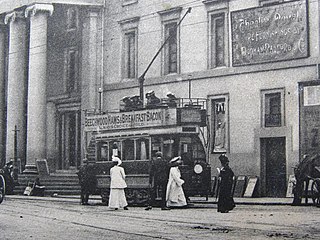
The tramways in Plymouth were originally constructed as four independent networks operated by three different companies to serve the adjacent towns of Plymouth, Stonehouse and Devonport in Devon, England. The merger of the 'Three Towns' into the new borough of Plymouth in 1914 was the catalyst for the three companies to join up under the auspices of the new Plymouth Corporation. The network was closed in 1945, partly as a result of bomb damage during World War II.
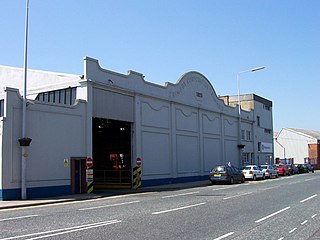
The Great Grimsby Street Tramways Company was a tramway serving Grimsby and Cleethorpes in Lincolnshire, England. It was a subsidiary of The Provincial Tramways Company. They opened a horse tramway in 1881, running from the Wheatsheaf Inn in Bargate to the border with Cleethorpes, with a branch along Freeman Street, and extended the line into Cleethorpes in 1887. It followed the trend of many British systems, and was converted to an electric tramway in December 1901. Small extensions were made to the system at both ends, but the basic plan of the system remained the same throughout its life.
Bradford Corporation Tramways were a tramway network in the city of Bradford, West Riding of Yorkshire, England which operated trams from 1882 until 1950 and trolleybuses from 1911 until 1972. The track gauge of the tramways was 4 ft.
References
- ↑ The Golden Age of Tramways. Published by Taylor and Francis.
- ↑ "Chronology of Sheerness in the lifetime of the Sheerness Heritage Centre". SheernessHeritageCentre.com. Retrieved 29 April 2007.